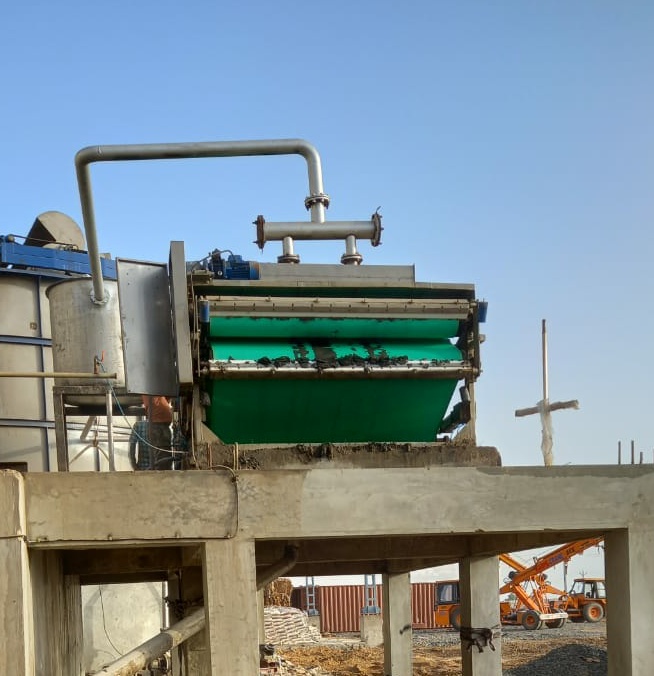Key Components of a Belt Filter Press Plant
- Belt Filter Press Unit: The central component responsible for dewatering sludge by applying pressure between two permeable belts. Sludge is processed between these belts to separate liquid from solids efficiently.
- Control System: This system oversees the operation of the belt filter press, ensuring it functions optimally and efficiently. It may incorporate sensors, PLCs (Programmable Logic Controllers), and human-machine interfaces (HMIs) for monitoring and control purposes.
- Sludge Feed System: Equipment designed to deliver sludge to the belt filter press, which could include pumps, conveyors, or feed hoppers. These components maintain a consistent sludge flow for effective dewatering.
- Dewatered Sludge Discharge: Mechanisms employed to remove dewatered sludge from the belt filter press, such as conveyor belts, augers, or discharge chutes. These facilitate further processing or disposal of the dewatered sludge.
Benefits of a Belt Filter Press Plant
- Effective Sludge Dewatering: Belt Filter Press Plants efficiently reduce the moisture content of sludge, resulting in substantial volume reduction and decreased disposal costs.
- Energy Efficiency: By utilizing pressure between permeable belts for dewatering, Belt Filter Press Plants consume less energy compared to alternative dewatering methods, contributing to overall energy conservation.
- Space Utilization: Belt Filter Press Plants are designed with a compact footprint, making them suitable for installations with limited space, thereby optimizing available area.
- Environmental Sustainability: Efficient sludge dewatering minimizes the environmental impact of wastewater treatment plants by reducing the volume of sludge requiring disposal and lowering associated transportation costs.
These vital components and advantages underscore the importance of Belt Filter Press Plants in enhancing the efficiency and sustainability of sludge management within wastewater treatment processes.
